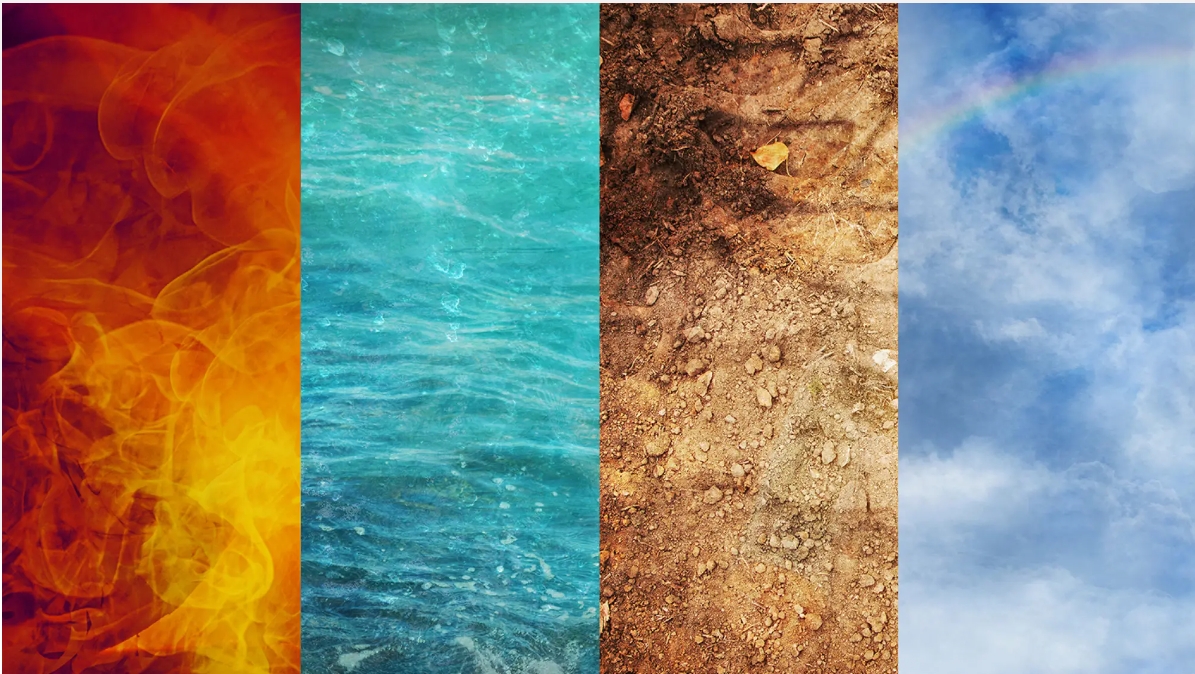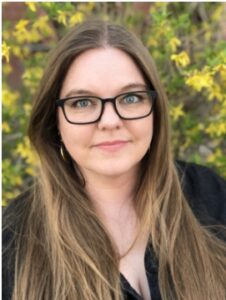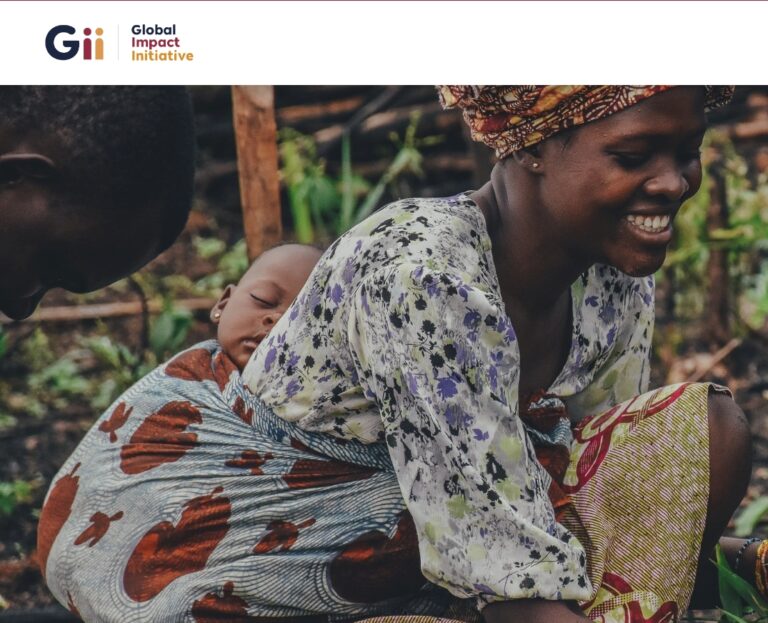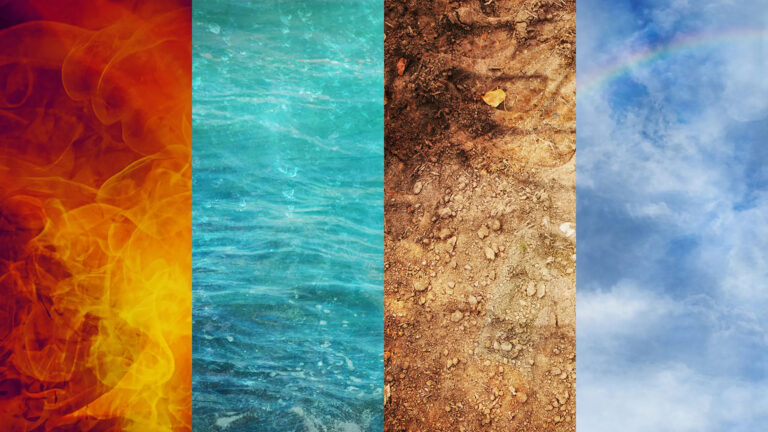How Climate Change Is Taught in America
What are kids being taught about climate change in American schools, what part of the discussion is causing friction, and what are the potential effects a generation miseducated on this topic?
Award-winning journalist Katie Worth wanted to know what children learn about climate change in America. As part of her research, she visited several states, talked to teachers, scoured text books, and spoke to students and their families. It turns out climate change education is just as contentious in the classroom as it is in politics.There were disagreements among teachers about how to approach it. Sometimes teachers were educating their kids about it, and the kids would push back because they’d heard at home that it was a hoax. Sometimes parents were mad that the kids were learning about it or that they weren’t learning about it. So it’s a hot topic on the ground, even for children,” Worth says. “This is like the classroom has really become a battleground in this adult political conversation around climate change. That misinformation that has permeated the adult world is of course filtering into the world of children.”
In this episode of the Harvard EdCast, Worth discusses the points of friction happening between teachers — sometimes within the same school — and how students are often unable to connect environmental disasters in their own communities with climate change.
TRANSCRIPT:
Jill Anderson: I’m Jill Anderson. This is the Harvard EdCast. Journalist Katie Worth’s reporting uncovers how climate change is taught in American schools, if at all. To find out how public schools are handling climate change she set out going inside America’s classrooms, meeting teachers, scouring textbooks, and speaking to students and families. Along the way, she discovered there’s a lot of misinformation in the climate change education happening in our schools. There are parts of the country where students will never even hear the words climate change in their entire education she says. I’ve wondered a lot about how climate change is taught and was eager to find out what Katie discovered. I asked her what was most surprising?
Well, it was interesting to me how many points of friction there were. I went to a couple dozen schools in my reporting, and every single school I went to there was a point of friction about it. Either there were disagreements among teachers about how to approach it. Sometimes teachers would educate their kids about it, and the kids would push back because they’d heard at home that it was a hoax. Sometimes parents were mad that the kids were learning about it or that they weren’t learning about it. So it’s a hot topic on the ground, even for children. This is like the classroom has really become a battleground in this adult political conversation around climate change. That misinformation that has permeated the adult world is of course filtering into the world of children.
Jill Anderson: How did you figure out which schools to visit and which states?
Katie Worth: I went to several states, often states where I knew there to be political battles over what was being taught in school. So for example, Idaho, there was basically a five year battle over whether to include climate change in the science standards, a panel of a educators tasked with creating our academic standards, which basically determine what a kid is going to learn each year in school, had recommended including it in middle school science, and that had to go through the state legislature. Year after year, struck those standards and refused to allow that education into their state’s science classes. So I went to Idaho, I attended some meetings. I met with a lot of kids, a lot of teachers. I spent some time in Idaho and Oklahoma.
Then I spent some time in my own home state of California, which was really interesting because I grew up in a little college town called Chico, which is north of Sacramento. It’s a liberal community, although it’s in a very red county. But I went to my own Alma mater and talked to teachers there. There had been conflict between a science teacher and a history teacher over whether they should be teaching climate change and what they should be telling kids. The science teacher believed in teaching the science, the history teacher was showing them disinformation video that said that it “Was a hoax, a liberal hoax, and that it was no big deal. Climate change was no big deal, they shouldn’t be worried about it.”Jill Anderson: It seems like you found that a lot though, this idea that it’s still up for debate in all walks of education from the textbooks, to the classroom, to just teachers.
Katie Worth: Yeah. So there hasn’t been a ton of research about what actually teachers teach about climate change. There’s one academic that’s done a couple of major surveys though. Each time they interviewed 1500 science teachers from around the country and asked them specifically how much time they spend on climate change and what they said about it? 1/3 say that they tell their students that “Many scientists believe that climate change is natural.” Another 1/3 say that “It’s still being debated.” So that leaves only 1/3 that are giving students the accurate information that humans are causing the climate crisis, and there’s no legitimate scientific debate over that fact.
That explains the fact that in an international survey, by the UN that was released earlier this year, it showed that a quarter of all 15 to 17 year olds in America rejected the idea that climate change is a crisis. So that was a higher percentage than any other country in North America or Europe. That’s not an accident, there’s been a major misinformation campaign that has happened here for adults and some of that has trickled into education. Then there’s also been a concerted effort to affect what kids learn about climate change by the fossil fuel industry.
Jill Anderson: I don’t know if there’s a black and white answer to this, but do the majority of students receive any climate change in education in America?
Katie Worth:
So that same study of 1500 science teachers, those science teachers said that the mean was between zero and two hours a year of education about climate change.Jill Anderson: Wow.
Katie Worth: The education experts that I talked to said, that’s just not enough for kids to really understand grasp, both the causes and the effects and the meaning of it. Talking about the kids in Oklahoma, there are many kids who learn nothing about it. Then there are some kids who are in districts or have teachers who really care about it and they actually get a legitimate education about it. One of the things that my research found was that there was a rough red blue divide. So you could roughly guess what a kid might learn about climate change, depending on if they lived in a red state or a blue state.
Jill Anderson: I don’t know what you would call it, I mean, you’d expect that divide there, but in some cases in a red state, you found really great climate change education.
Katie Worth: I think it has something to do with how much deference a state legislature gives to the panel of experts, panel of educators that asked with writing academic standards. So in some states like Idaho, the lawmakers really read the academic standards and get upset over what’s in them. Then in other states, they defer to the education experts that write them and rubber stamp it. So we mapped academic standards as they pertain to climate change onto a red, blue purple map of the country. What we found was there was not a single blue state that had poor standards when it came to climate change. The red states were all over the map. So there were a few that even did better than most blue states. They had excellent standards, but the majority had standards that either they didn’t mention it at all, they mentioned it as a scientific debate, which is inaccurate, or they very lightly handled it.
Jill Anderson: Did you often find teachers attempting to work outside of the existing standards for better and maybe for worse?
Katie Worth: Yeah, absolutely. I would say there’re Intrepid teachers in every district in America, probably who care about this issue, who think that kids deserve to know about the world that they’re entering, and who give kids in their classes a really great education about it. But there’s also often a teacher in the very next room that is giving them misinformation or totally ignoring the subject, even if it is in the standards. I went to one school and talk to an AP teacher… so AP environmental science, doesn’t beat around the bush. If you’re taking an AP environmental science class, you’re going to learn all about climate change.
But this teacher said that her predecessor who taught the class before her refused to teach it, because he had family that worked in oil fields and he just thought it was a political issue and that he shouldn’t be required to teach it. He would hand out worksheets for the kids to do on their own. He refused to actually lecture about it. Of course the kids didn’t do very well on the AP test. I think it cuts both ways like education is so localized. Ultimately what happens in a classroom is behind the door of the classroom, it’s a matter between the teacher and the kids. So we can’t really exactly quantify how much teachers are teaching it, but we have a sense that it’s very uneven.
Jill Anderson: What did you hear from children? And how did their opinions and views shift when they actually received some accurate education?
Katie Worth: It was really fascinating. It wasn’t to find children who had parents who were really ideological about it. If the most important people in your life are telling you, “This is a hoax and don’t believe this, that teacher is not telling you the truth about this.”, and you’re a kid, that’s probably the direction that you will go, at least in that moment. But it’s still worth planting the seed, giving some information, some data to those kids because later maybe they’ll get more and more and they’ll think more for themselves. Right? One of the most striking examples of this that I came across was again, in my hometown of Chico, it’s about 15 miles away from the town of Paradise, California. Which you might remember burned to the ground in a wildfire in 2018 and 87 people died and 90% of the buildings in that town were destroyed.
So, although one of the schools relocated to Chico for the rest of the year until they could fix the schools in Paradise. The middle school took up residents in the only real estate that was available, which was this big box hardware store that had been shuttered. So the classes were all in the aisles. So, like the science class that I sat in on was in aisles nine and 10, which was like ceiling fans. The kids played kickball in the garden center, they got their lunch on the checkout counters. It was just very surreal and apocalyptic place to like your fractions. Right? I sat in on the science class of a teacher who every single year taught climate change to his seventh graders. This year he was teaching it to a group of climate refugees, basically. Every single student in that class had their whole lives burned down in that fire.
He was just explaining the science of it. What has caused it, how we’ve increased the amount of heat trapping pollution in the atmosphere. That’s changing how long our summers are and how warm they are, and the length of the rainy season and what that looked like in Paradise. At one point a little boy named [Nikola 00:12:16] raised his hand and he said, “Mr. Kessler”… was the science teacher. “I’ve been wondering something. I don’t know what to believe about climate change because my mom and dad say that it’s not true, that it’s not happening.” he started reciting all the reasons that he’d heard at home, like “The climate changes all the time. Last year, we had all this snow and they’re telling us there’s climate change, but there was all this snow, they lied about how much the data is bad.”
He just like had all of these arguments that… He had probably gone him and talked to his parents and said like, “Oh, we’re learning about global warming.” Then the parents had given him a whole bunch of information, their perspective on that. So then he goes back into class and Mr. Kessler said, “Nikoa, I’m sure that’s really confusing to hear different information from different people in your life. I’m glad you raised this. It’s always good to raise questions in class, and I’m not here to tell you what to believe. I’m just here to give you the best data and information that I can. You can look at that and draw your own conclusions. We’re looking at data from NASA. We’re looking at temperature data from around the world. It’s just discovery. That’s what science is. You get to look at it and make your own analysis and your own predictions.” I thought that was a really beautiful way to handle that rather than saying “Your parents are wrong.”
Jill Anderson: Yeah.
Katie Worth: But then a few days later, he gave them a writing prompt just as a unit was ending. that writing prompt was how has climate change affected your life so far? how do you think it will affect your life in 50 years? This was a class full of kids whose homes had burned in a fire. Nikola wrote, “I don’t think that it has affected my life at all so far. I don’t know if it’ll affect my life in 50 years, because I don’t know if I believe in it yet.”
Jill Anderson: Hmm.
Katie Worth: I mean, obviously you can’t pin any given event on climate change, but we know that the five hottest summers in Paradises history, it all happened in the five years before that wildfire. The town had received less than an inch of rain in the last six months before the fire. That’s not how it was when I was a kid living in that county. We used to get summer storms and like late spring storms, early fall storms. They hadn’t gotten any of that, they’d gotten maybe a day of light drizzle in six months. So there’s climate changes, fingerprints all over that fire and the kids that were affected by it, some of them anyway were told not to believe in it.
Jill Anderson: I wondered what Mr. Kessler thought of those responses?
Katie Worth: He had run into it quite a lot because Paradise was a politically very red community. He taught this unit every year and ran into kids who were told that it was a hoax. So he had navigated it before and it didn’t really surprise him, but he still felt like it was important to tell the kids about the world that they were entering.
Jill Anderson: I love the Mr. Kessler story because I think it so wonderfully illustrates how to handle something that a lot of educators might back away from just out of fear of upsetting a family or maybe someone else within the building. It seems like there’s a lot of that understandable anxiety and fear that goes into being a teacher and tackling this topic.
Katie Worth: Yeah. This area hasn’t been studied in great depth yet, unfortunately. But there’s been some surveys that have shown that teachers have anxiety about this. I think in the same way that they had anxiety about teaching evolution for a long time, because that was another science question that people had very big feelings about that weren’t attached to the science. A lot of teachers for a long time, and textbooks, and academic standards avoided or tiptoed around evolution. Even though evolution is the organizing principle of biology, right? The surveys show that there’s some of that happening on climate change.
Jill Anderson: I want to go back to something that you mentioned earlier, which is the fossil fuel industry.
Katie Worth: Yeah. Well, there’s a few levels of it. First of all, they have a long history of creating educational products. Like lesson plans, they’ll pay for kids to take field trips to near by oil derrick. There’s actually a long history of these educational products that are created by the fossil fuel industry. Of course not just the fossil fuel industry, every industry does this because there’s benefit to getting to kids young, and shaping their opinion about your industry. There are these programs in almost every single state run by fossil fuel companies, some of them are more organized than others. One day I was in Arkansas visiting a middle school science department and I was sitting there interviewing the teachers, and in walks a lobbyist from the state’s oil and gas industry association. She was there to talk to the seventh graders. She had been invited as a guest and her whole job is to go classroom to classroom and give a presentation.
She has this whole PowerPoint present and she’s talking about the geology, where the oil and gas are, and what parts of the state it’s in and how it got there? But then of course there was a part of the presentation where she’s talking about renewables and she says, “Well the problem with fossil fuels is carbon emissions.” But there’s a problem with every single one of these fuel sources, solar power. What happens if there’s a tornado? People don’t like windmills because they kill birds. Any power source that you think of, there’s a problem. I think she said something like “If America shut down every fossil fuel emission tomorrow, the difference that it would make in global climate change is 0.01%,” which is radically inaccurate. Then she says, “If we did that, think of all the problems that we would have.” So they mention that windmills kill birds, but they don’t mention that climate change could eliminate a third of the bird species on earth by the end of the century.
She said it to me directly. She said, “Oh yeah, we used to give this presentation to adults, but then we thought if we really want to change how people think about the oil industry, we got to get to them young. We got to get to kids.” That’s the only instance where I found lobbyists going classroom to classroom, but there were tons of other examples of fossil fuel industry talking points, getting into classrooms. Teachers are really busy, like if I Google energy lesson and I find in this fancy well produced lesson plan, that looks good and looks like it’ll be engaging to the kids and I needed to do a lesson on energy the next day, I’ll just print it out. I might not even notice that in fine print it says that it’s from the Oil and Gas Association. It’s not exactly the teacher’s fault. A lot of teachers didn’t get much education about climate change themselves.
Jill Anderson: What is lost for children when we forgo some type of accurate and honest climate change education?
Katie Worth: Well, there’s one perspective that we owe it to kids to inform them of the world that they’re entering, and you set them up to help solve the problem and not just feel hopeless about it. We teach them to read, we teach them math. This is another essential subject in a lot of people’s minds. Also, they are going to be voting civically engaged citizens in the not too distant future. So if we hope to forced all the worst effects of climate change, we need them to participate, and we need them to know something about at it to have some grounding. Then there’s another aspect, every industry is transforming, not just the energy industry, but agriculture, transportation. Basically, every industry you can think of is being changed by this phenomenon that’s drastically altering our future. If a kid gets through their whole education and doesn’t know that, then they’re going to have a pretty skewed perspective of what would be a good career to invest in.
Jill Anderson: Do you think there is an ideal climate change education?
Katie Worth: There’s some really great resources on a site called Cleanet C-L-E-A-N-E-T .org, I believe. But ultimately I heard somebody say it like this: Kids should know this about climate change: That it’s real, that it’s bad, that there’s hope, and that scientists agree about it, and that it’s us. We need them to understand the basics. They don’t have to walk out of school, an expert on causality of climate change or atmospheric levels of various greenhouse gases. But they have to have a sense that things are changing, why that’s happening? That it already is transforming our world. That there are things that we can do to help fix it or at least stop some of the worst effects of it.
Jill Anderson: Well, this has been very informative and interesting, Katie, thank you so much.
Katie Worth: Yeah, of course. So glad to be here.
Jill Anderson: Katie Worth is an award-winning journalist. She’s the author of Miseducation: How Climate Change is Taught in America. I’m Jill Anderson. This is the Harvard EdCast produced by the Harvard Graduate School of Education. Thanks for the listening.






